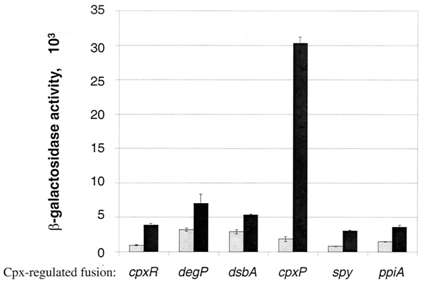Team:Calgary/Project/CpxP
From 2010.igem.org
H.dastidar (Talk | contribs) |
H.dastidar (Talk | contribs) |
||
| Line 107: | Line 107: | ||
<h2 style="color:#0066CC">How does a native <i>E. coli</i> cell combat periplasmic stress?</h2> | <h2 style="color:#0066CC">How does a native <i>E. coli</i> cell combat periplasmic stress?</h2> | ||
| + | |||
| + | <h3>CpxP</h3> | ||
| + | |||
| + | <h3>CpxR</h3> | ||
| + | |||
| + | <h3>DegP</h3> | ||
<h2 style="color:#0066CC">Circuit usage and sensitivity</h2> | <h2 style="color:#0066CC">Circuit usage and sensitivity</h2> | ||
Revision as of 09:12, 27 October 2010

Periplasmic Stress Detectors
What causes periplasmic stress?
Team Calgary circuits for periplasmic stress detector



|
These images illustrate the promoters of choice by team Calgary for detection of periplasmic stress. The promoters of choice include CpxP, CpxR and DegP promoters. |
How does a native E. coli cell combat periplasmic stress?
CpxP
CpxR
DegP
Circuit usage and sensitivity
The circuit that will be constructed to detect protein misfolding will have the cpxP promoter. Two other similar circuits will be constructed to compare the activation of cpxP promoter compared to degP and cpxR promoter. All three promoters have the same function: activation of degP which degenerates misfolded proteins in the cell. As it can be seen in the graph below, the cpxP promoter is the most sensitive to the stress. The purpose of this circuit is to detect protein misfolding. For example, cpxP promoter becomes activated under several specific streses: elevation of pH and overexpression envelope proteins such as NlpE. Hence, if periplasmic misfolding occurs in the cell of an E.coli bacteria, the reporter gene, in this case the Red Fluroscent Protein (RFP), will be activated. Hence, the activation of the RFP will be the indication of a periplasmic protein misfolding.
 "
"
